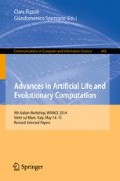Abstract
In this paper a fault detection analysis through a neural networks ensembling approach and statistical pattern recognition techniques is presented. Abnormal consumption or faults are detected by analyzing the residual values, which are the difference between the expected and the real operating data. The residuals are more sensitive to faults and insensitive to noise. In this study, first, the experimentation is carried out over two months monitoring data set for the lighting energy consumption of an actual office building. Using a fault free data set for the training, an artificial neural networks ensemble (ANNE) is used for the estimation of hourly lighting energy consumption in normal operational conditions. The fault detection is performed through the analysis of the magnitude of residuals using peak outliers detection method. Second, the fault detection analysis is also carried out through statistical pattern recognition techniques on structured residuals of lighting power consumption considering different influencing attributes i.e. number of people, global solar radiation etc. Moreover the results obtained from these methods are compared to minimize the false anomalies and to improve the FDD process. Experimental results show the effectiveness of the ensembling approach in automatic detection of abnormal building lighting energy consumption. The results also indicate that statistical pattern recognition techniques applied to residuals are useful for detecting and isolating the faults as well as noise.
Access this chapter
Tax calculation will be finalised at checkout
Purchases are for personal use only
References
Arbib, M.A.: The Handbook of Brain Theory and Neural Networks. MIT press, Cambridge (2003)
Bishop, C.M.: Neural Networks for Pattern Recognition. Oxford University Press Inc, New York (1995)
Dodier, R.H., Kreider, J.F.: Symposium papers-ch-99-5-fault detection and diagnostics-learning from building operations-detecting whole building energy problems. ASHRAE Trans. Am. Soc. Heating Refrig. Airconditioning Engin 105(1), 579–592 (1999)
Ester, M., Kriegel, H.P., Sander, J., Xu, X.: A density-based algorithm for discovering clusters in large spatial databases with noise. In: KDD, vol. 96, pp. 226–231 (1996)
Haykin, S.: Neural Networks: A Comprehensive Foundation, 2nd edn. Prentice Hall PTR, Upper Saddle River (1998)
Holcomb, D., Li, W., Seshia, S.A.: Algorithms for green buildings: learning-based techniques for energy prediction and fault diagnosis. Google Scholar, UCB/EECS-2009-138 (2009)
Juang, B.H., Rabiner, L.: The segmental k-means algorithm for estimating parameters of hidden markov models. IEEE Trans. Acoust. Speech Sig. Process. 38(9), 1639–1641 (1990)
Katipamula, S., Brambley, M.R.: Review article: methods for fault detection, diagnostics, and prognostics for building systems a review, part i. HVAC&R Res. 11(1), 3–25 (2005)
Khan, I., Capozzoli, A., Corgnati, S.P., Cerquitelli, T.: Fault detection analysis of building energy consumption using data mining techniques. Energy Procedia 42, 557–566 (2013)
Krogh, A., Vedelsby, J., et al.: Neural network ensembles, cross validation, and active learning. In: Tesauro, G. (ed.) Advances in Neural Information Processing Systems, pp. 231–238. MIT Press, Cambridge (1995)
Li, X., Bowers, C.P., Schnier, T.: Classification of energy consumption in buildings with outlier detection. IEEE Trans. Ind. Electron. 57(11), 3639–3644 (2010)
Liu, D., Chen, Q., Mori, K., Kida, Y.: A method for detecting abnormal electricity energy consumption in buildings. J. Comput. Inf. Syst. 6(14), 4887–4895 (2010)
Liu, Y., Yao, X.: Ensemble learning via negative correlation. Neural Netw. 12(10), 1399–1404 (1999)
Palshikar, G., et al.: Simple algorithms for peak detection in time-series. In: Proceedings of the 1st International Conference Advanced Data Analysis, Business Analytics and Intelligence (2009)
Perrone, M.P., Cooper, L.N.: When networks disagree: ensemble methods for hybrid neural networks. Technical report, DTIC Document (1992)
Rosenblatt, F.: The perceptron-a perceiving and recognizing automaton. Technical report 85–460-1, Cornell Aeronautical Laboratory, Buffalo, NY, 00344 (1957)
Rosenblatt, F.: Principles of neurodynamics. Perceptrons and the theory of brain mechanisms. Technical report, DTIC Document (1961)
Seem, J.E.: Pattern recognition algorithm for determining days of the week with similar energy consumption profiles. Energy Buildings 37(2), 127–139 (2005). http://www.sciencedirect.com/science/article/pii/S0378778804001434
Seem, J.E.: Using intelligent data analysis to detect abnormal energy consumption in buildings. Energy Buildings 39(1), 52–58 (2007). http://www.sciencedirect.com/science/article/pii/S0378778806001514HrB
Timofeev, R.: Classification and regression trees (cart) theory and applications (2004)
Yoshida, K., Inui, M., Yairi, T., Machida, K., Shioya, M., Masukawa, Y.: Identification of causal variables for building energy fault detection by semi-supervised lda and decision boundary analysis. In: 2008 IEEE International Conference on Data Mining Workshops, ICDMW’08, pp. 164–173. IEEE (2008)
Yu, B., van Paassen, D.H.: Fuzzy neural networks model for building energy diagnosis. In: 8th International IBPSA Conference, pp. 1459–1466 (2003)
Author information
Authors and Affiliations
Corresponding author
Editor information
Editors and Affiliations
Rights and permissions
Copyright information
© 2014 Springer International Publishing Switzerland
About this paper
Cite this paper
Khan, I., Capozzoli, A., Lauro, F., Corgnati, S.P., Pizzuti, S. (2014). Building Energy Management Through Fault Detection Analysis Using Pattern Recognition Techniques Applied on Residual Neural Networks. In: Pizzuti, C., Spezzano, G. (eds) Advances in Artificial Life and Evolutionary Computation. WIVACE 2014. Communications in Computer and Information Science, vol 445. Springer, Cham. https://doi.org/10.1007/978-3-319-12745-3_1
Download citation
DOI: https://doi.org/10.1007/978-3-319-12745-3_1
Published:
Publisher Name: Springer, Cham
Print ISBN: 978-3-319-12744-6
Online ISBN: 978-3-319-12745-3
eBook Packages: Computer ScienceComputer Science (R0)

